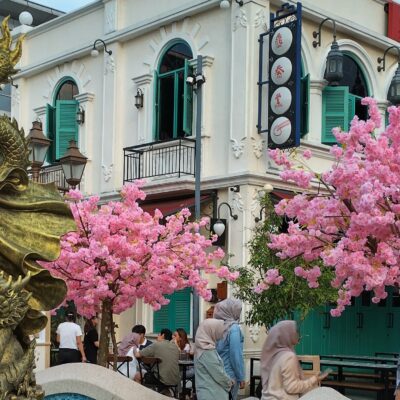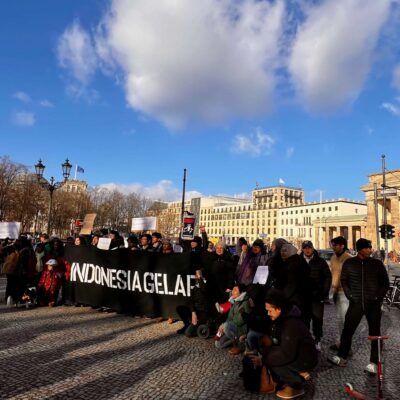Indonesia’s social insurance system, like many countries in the Global South which adopted a social insurance model from Europe, has continually been plagued with low coverage and dropouts which may threaten the system’s financial sustainability.
During the COVID-19 pandemic, at least two million people dropped out of Indonesia’s National Health Insurance (Jaminan Kesehatan Nasional or JKN) because they failed to pay contributions. Health service utilisation also declined. In addition, four million workers deactivated their Employment Social Security (Jaminan Sosial Ketenagakerjaan or Jamsostek) membership during the pandemic.
Measures have been taken to address low-coverage, such as new ways to make payment more convenient, but this may not be enough.
Is the social insurance system relevant to contemporary contexts?
Indonesia launched its national social security system in the 2010s. The system comprises of employment (Jamsostek) and health social insurance (JKN). Membership is related to employment status, with the main categories being PPU (Pekerja Penerima Upah or salaried workers), PBPU (Pekerja Bukan Penerima Upah or non-salaried workers) and construction workers. The employment insurance consists of five programs i.e. work accident benefits (JKK), death benefits (JKM), old-age benefits (JHT), pension (JP) and unemployment benefits (JKP), with contributions paid as a share of wages or income, or at a fixed rate for non-salaried members. For JKN, the premiums of those in the lowest two income quintiles are paid through tax-funded subsidies (Penerima Bantuan Iuran or PBI).
Coverage remains very low. In 2022, only 36 million people—26 percent of a total 135 million workers—were active members of Jamsostek (i.e. those actively paying contributions), and around 19 million people were non-active (not paying contributions, but were or were due to receive old-age benefits and pension). Of the 36 million, only six million of them were non-salaried workers (PBPU) and seven million others were construction workers, while the other 23 million were salaried workers. This means that approximately six million people or only about four percent of people in employment were voluntarily subscribed to Jamsostek in 2022.
In terms of health insurance, although more than 90 percent of the population (nearly 249 million people) were covered by JKN in 2022, more than 60 percent were tax-funded or fully subsidised (PBI), a quarter were salaried workers, two percent were non-workers and only 12 percent of members paid the contributions voluntarily (PBPU or non-salaried workers).
The underlying reasons for low coverage of health and occupational insurance are complex, and may lie at the heart of the social insurance model itself. The model is predicated on elements that are significantly changing: standard employer-employee relations and wages; an insufficient pool of current and future payments; and inadequate benefits for individuals when insured risks materialise, such as unemployment, illness, or old-age.
Approximately, half of workers in Indonesia are not employed under ‘standard’ employment relations and 90 percent of businesses are small and medium enterprises that often pay lower wages and have low employment standards. A huge number of people work in the gig economy and experience the work precarity that comes with it. Amidst other more pressing expenses and lack of disposable income, these workers often cannot pay social insurance contributions regularly. The instability of regular payments over time means it is difficult for insurers to remain solvent. The ILO has estimated that from 2044 onward, Indonesia’s pension system will be unable to pay claims and other expenditures from contributions. It is expected to experience even more financial issues from 2050 onward due to an ageing population with fewer productive workers making contributions at the same time as more workers enter retirement age and will need to receive insurance benefits. An additional issue is that inflation may mean that workers don’t receive sufficient benefits when needed.
A social insurance model designed in the 19th century European context where the world of work and economy were starkly different, may not be relevant in 21st century Indonesia and many Global South nations where shifting employment relations, income equality and demographic change create new challenges to the sustainability of the model.
Lack of trust
Another important concept that might help explain the reluctance of Indonesians to enrol in social insurance is a lack of trust in institutions. According to the 2023 Edelman global trust survey, Indonesians retain quite high levels of trust in key institutions such as business, media, government and NGOs.
However, there is historically a lack of trust in relation to collective arrangements of money. Lack of trust has hampered the expansion of many collective financial arrangements, such as RoSCA (mutual help, or arisan)—self-regulatory groups which pool money for saving lending. They usually remain small and close knit to avoid situations where members or organisers ‘take the money and run’. Most mutual help organisations emerged at the end of the 19th century, but failed to develop into more professional organisations, partly due to lack of trust in authorities generally, stemming from colonial laws and bureaucracy which discriminated against people on the basis of race and skin colour.
In present-day Indonesia, there are repeated failures of state-owned or commercial insurance companies. In recent years, giant insurance companies such as PT ASABRI, Asuransi Jiwasraya, and AJB Bumiputra failed to pay benefits to their policyholders. The latter two are the oldest insurance companies in Indonesia, which were thought to be ‘too big to fail’. In addition, lack of transparency relating to public institutions has also deteriorated public trust. A recent example is the dispute between Indonesia Corruption Watch (ICW) and the Ministry of Finance regarding the disclosure of BPJS Health (National Health Insurer) audit results. This led to intensified distrust of Indonesians in insurers, as the media puts it, ’insured but not assured’.
My doctoral thesis found that most research informants had a lack of trust in public institutions for various reasons and this made them more reluctant to participate in social insurance. This was especially pronounced among low socio-economic groups, due to discrimination they had faced from the public service. Eligibility for social service has required evidence of poverty, which was stigmatised. For those with better financial resources, many reported being misled by friends or relatives who worked in financial institutions. For example, some reported that they were persuaded by friends or relatives working as insurance agents to purchase an insurance policy, but when they later left the company, it was difficult for those trying to claim benefits to receive them.
Workers’ risk rationalities
While insurance illiteracy or financial illiteracy in general is often cited as the cause of low social insurance coverage, the decision to insure or not is more complex. Insurance should be understood as only one tool, among others, to deal with risk.
In an attempt to understand various rationalities of Indonesian workers and how they perceive and deal with risk, my thesis examined the influence of resources, social relationships and perspectives on the future. Combining these three elements, I developed three types of risk rationalities that people use when deciding whether they are willing to take social insurance or not:
- Surviving the present: Individuals in this category mainly do not insure themselves, as their priority is to have enough money to pay for basic needs and they do not generally have disposable income for anything else. They have very low-incomes and are often self-employed or low-paid labourers in urban slum or agricultural settings with few assets. Some people in this situation are already covered by government subsidies for health insurance, but there are currently no subsidies for employment insurance so far.
- Protecting the family: For individuals in this category, insurance is considered when they have more secure employment and income, but they still feel that their current security to some extent, is fragile and therefore they are looking for ways to protect their children and other family members. Most of them chose insurance or social insurance as one of the means to protect them from financial risk in the future, or simply because their employers enrolled them as part of their employment contract.
- Flexibly control the future. Those in this category have better resources and wealth but found many insurance products too inflexible and limited their control over their future resources. They had confidence that they had sufficient resources such as knowledge and skills to control risk. Their choice was commonly a product such as the ULIPs (Unit-Linked Insurance Products), which combines insurance and investment and which has term of disbursement that are more flexible than merely life or health insurance.
This illustrates that while financial literacy is important, people’s experience and circumstances also impact greatly on their social insurance decisions.
Conclusion
For Indonesia’s national social insurance model to be viable, it needs enough subscribers making regular payments at a high enough rate. The scheme also needs to adapt to fast-changing employment relations and demography, rather than being based on a design that is two centuries old.
Furthermore, trust is a key social concept that encompasses many realities, social and economic alike that is often unrecognised and undermined. Lack of trust in institutions and people who work in institutions are often inseparable. Building transparency and improving the quality of public and financial institutions is needed to regain trust to public in institutions.
Finally, understanding the diversity of people’s risk rationalities can help policymakers understand the dynamics of people’s realities. Social insurance must be designed to be more adaptive and more flexible to cater such realities.
Image: Workers in Yogyakarta. Credit: Jorge Franganillo/Flickr.




